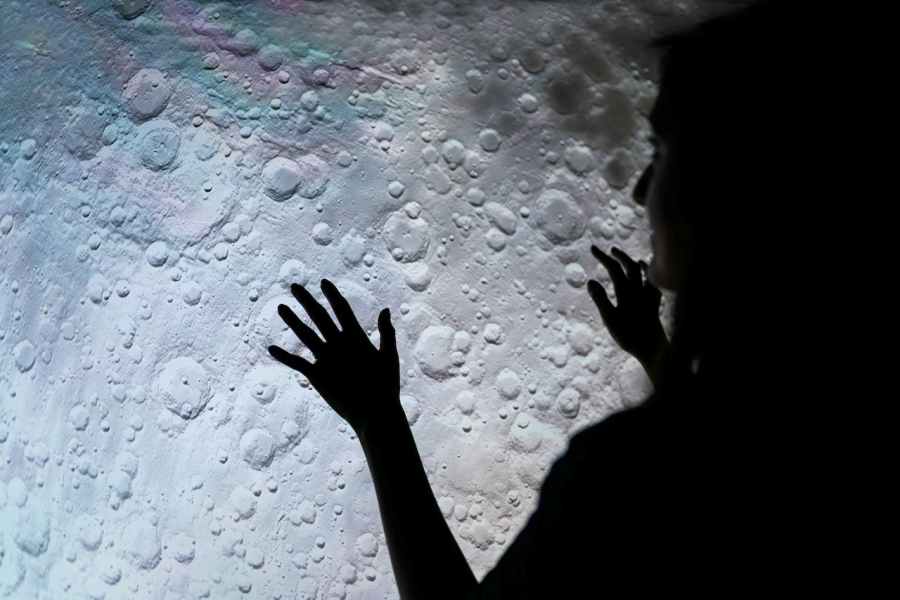Tue 28 March 2023:
The moon was long thought to be dry, but over the last few decades, several missions have shown there is water both on the surface and trapped inside minerals.
Scientists say they have discovered water trapped inside tiny beads of glass scattered across the moon, suggesting a potential reservoir of this precious resource for future human activities on the lunar surface.
Scientists said on Monday that an analysis of lunar soil samples retrieved in 2020 during China’s robotic Chang’e-5 mission showed that these spheres of glass – rock melted and cooled – bore within them water molecules formed through the action of the solar wind on the moon’s surface.
SPACESUITS FOR FUTURE US MISSIONS TO THE MOON UNVEILED BY NASA
“The moon is constantly bombarded with impactors – for example micrometeoroids and large meteoroids – which produce impact glass beads during high-energy flash-heating events,” said planetary scientist Sen Hu of the Chinese Academy of Sciences’ Institute of Geology and Geophysics, a co-author of the study published in the journal Nature Geoscience.
The solar wind, which permeates the solar system, is an outflow of charged particles, primarily protons and electrons, from the corona, the outermost region of the sun’s atmosphere.
“Solar wind-derived water is produced by the reaction of solar hydrogen with oxygen present at the surface of the lunar glass beads,” Hu said, with these spheres then acting like a sponge for the water.
Water is crucial for future moon exploration, including potential long-term lunar bases staffed with astronauts, not only as a source of drinking water but also as an ingredient in fuel.
‘Heat the glass beads to free the water’
The moon lacks the bodies of liquid water that are a hallmark of Earth. But its surface is thought to harbour a fairly substantial amount of water, for example in ice patches residing in permanently shadowed locales and trapped in minerals.
“Water is the most sought-after commodity for enabling sustainable exploration of planetary surfaces. Knowing how water is produced, stored and replenished near the lunar surface would be very useful for future explorers to extract and utilise it for exploration purposes,” Hu said.
Researchers believe there is potential in extracting water from glass beads, perhaps by heating them to release vapour that would later condense into liquid.
NASA’S ARTEMIS I MISSION CAPTURES CLOSEST IMAGES OF SURFACE OF THE MOON (PHOTOS)
“We can simply heat these glass beads to free the water stored in them,” said Hu.
The capsule returning the soil samples to Earth landed in the northern Chinese region of Inner Mongolia.
About 3.8 pounds (1.7 kg) of soil were collected in the Chang’e-5 mission, with 32 glass beads – tens to hundreds of micrometres wide – examined in the study from the small amount of soil made available for this research, Hu said.
The water content of the glass beads was discovered to be up to 2,000 parts per million by weight. Hu believes that such impact glass beads are a common component of lunar soils, found globally and evenly distributed.
SOURCE: INDEPENDENT PRESS AND NEWS AGENCIES
___________________________________________________________________________________________________________________________________
FOLLOW INDEPENDENT PRESS:
TWITTER (CLICK HERE)
https://twitter.com/IpIndependent
FACEBOOK (CLICK HERE)
https://web.facebook.com/ipindependent
Think your friends would be interested? Share this story!





